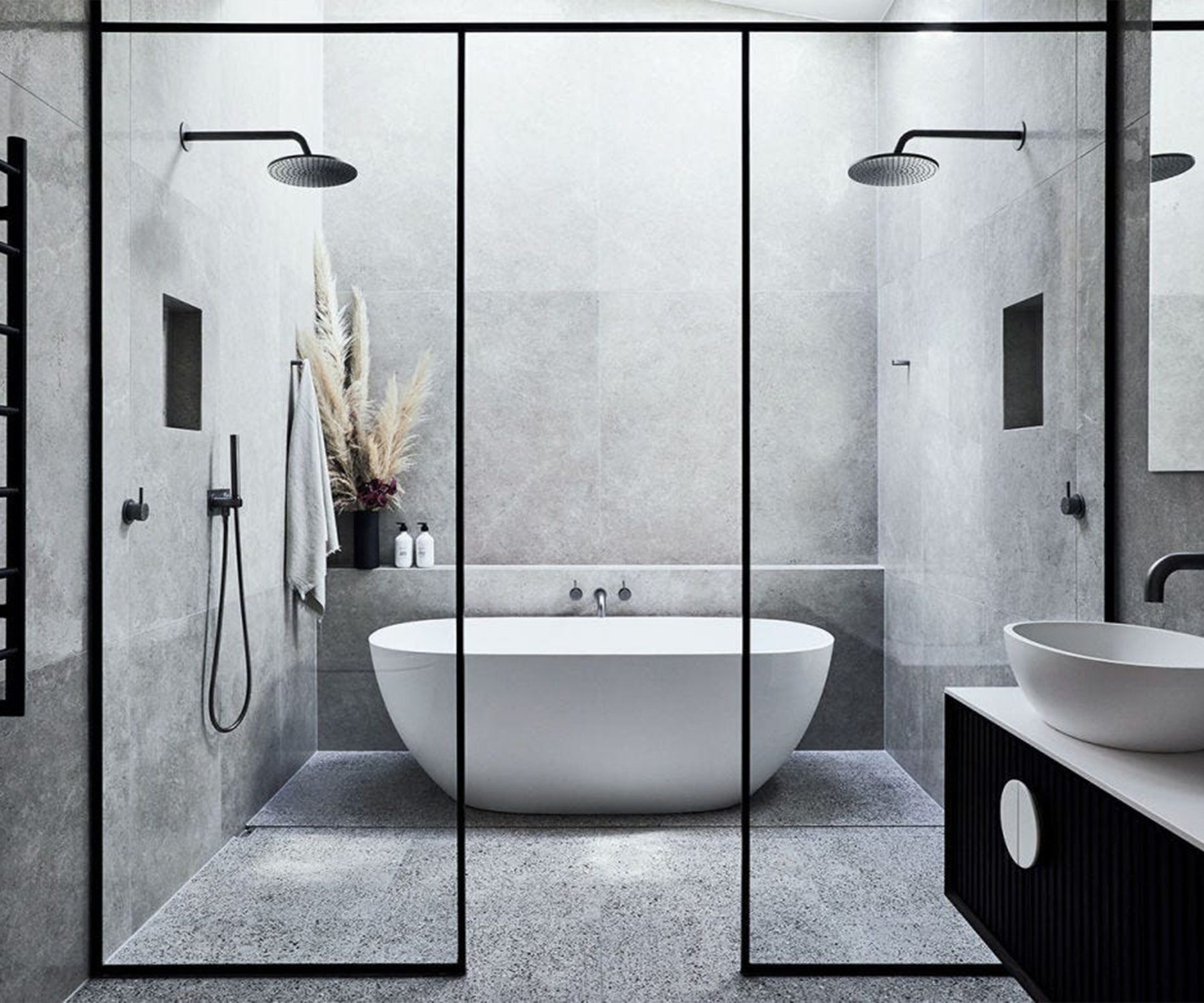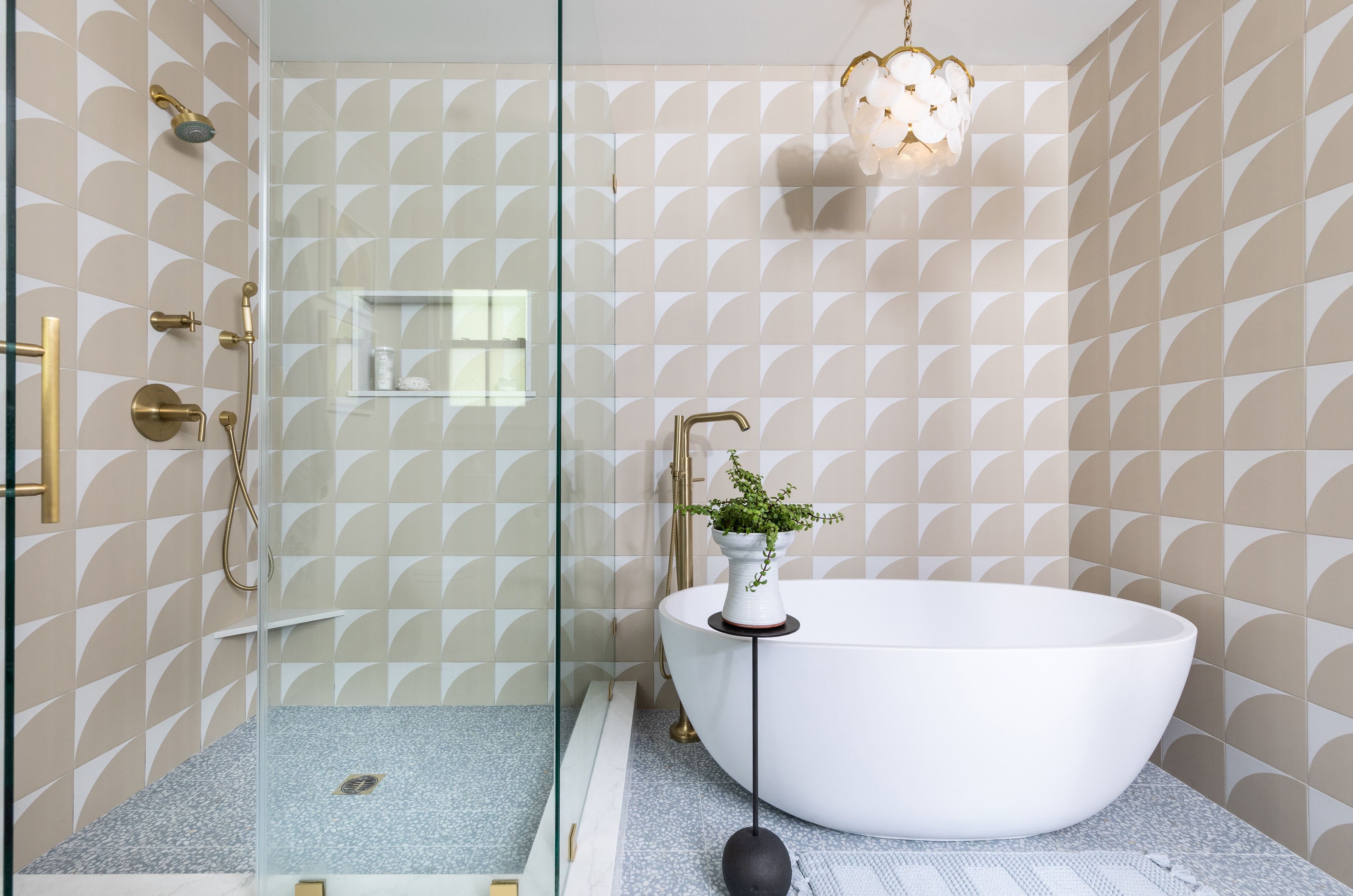The Allure of Period Style Bathrooms

Stepping into a period-style bathroom is like stepping back in time, transporting you to a bygone era of elegance and sophistication. These bathrooms, often adorned with intricate details and timeless designs, evoke a sense of history and charm that transcends trends. They are a testament to the enduring appeal of classic styles, offering a unique blend of functionality and aesthetic beauty.
Victorian Bathroom Style
Victorian bathrooms, reflecting the opulence and grandeur of the Victorian era (1837-1901), often featured elaborate fixtures, ornate tiling, and a focus on comfort and practicality.
- Materials: Marble, cast iron, and porcelain were commonly used, creating a luxurious and enduring aesthetic.
- Features: Clawfoot tubs, pedestal sinks, and ornate mirrors were essential elements, often adorned with intricate details and decorative accents.
- Color Palette: Deep, rich colors like burgundy, emerald green, and navy blue were favored, creating a sense of warmth and sophistication.
- Inspiration: Victorian bathrooms often drew inspiration from nature, incorporating floral motifs, botanical patterns, and intricate carvings.
“The Victorian era was a time of great technological advancement, and this is reflected in the design of Victorian bathrooms. The invention of the flushing toilet and the widespread use of running water transformed the bathroom from a basic necessity into a space for relaxation and indulgence.”
Art Deco Bathroom Style
Art Deco bathrooms, reflecting the geometric patterns and luxurious materials of the Art Deco era (1920s-1930s), embraced a bold and glamorous aesthetic.
- Materials: Chrome, glass, and polished metals were used extensively, creating a sleek and modern look.
- Features: Geometric shapes, streamlined designs, and bold colors were hallmarks of Art Deco bathrooms, creating a sense of dynamism and sophistication.
- Color Palette: Vibrant colors like gold, silver, black, and white were popular, creating a sense of opulence and glamour.
- Inspiration: Art Deco bathrooms drew inspiration from modernism, incorporating geometric patterns, stylized forms, and bold lines.
“Art Deco bathrooms were a departure from the traditional Victorian style, embracing a more modern and streamlined aesthetic. They reflected the spirit of the Roaring Twenties, a time of economic prosperity and social change.”
Edwardian Bathroom Style
Edwardian bathrooms, reflecting the elegance and refinement of the Edwardian era (1901-1910), often featured a blend of Victorian opulence and modern practicality.
- Materials: Marble, wood, and porcelain were common materials, creating a sense of elegance and durability.
- Features: Edwardian bathrooms often incorporated features like built-in cabinets, spacious vanities, and decorative tiles, creating a sense of functionality and style.
- Color Palette: Soft pastels, cream, and white were favored, creating a sense of tranquility and sophistication.
- Inspiration: Edwardian bathrooms often drew inspiration from the Arts and Crafts movement, incorporating natural materials, simple forms, and handcrafted details.
“Edwardian bathrooms were a transitional style, blending the elegance of the Victorian era with the practicality of the modern age. They were designed to be both functional and beautiful, reflecting the changing values of the time.”
Creating a Period Bathroom

Creating a period-style bathroom is an exciting project that involves careful planning and attention to detail. The goal is to capture the essence of a specific era, whether it’s the Victorian elegance of the 19th century, the Art Deco glamour of the 1920s, or the mid-century modern simplicity of the 1950s. By understanding the key elements of period design, you can transform your bathroom into a beautiful and timeless sanctuary.
Essential Elements of Period Bathrooms
The choice of period style dictates the essential elements of a period bathroom. From the layout to the fixtures, materials, and finishes, every aspect should contribute to the overall aesthetic.
Bathroom Layout
A well-designed bathroom layout is essential for creating a functional and visually appealing space. Consider the following factors when designing your period bathroom:
- Space and Functionality: The size and shape of your bathroom will influence the layout. For example, a small bathroom might require a more compact design, while a larger bathroom can accommodate more elaborate features.
- Period-Specific Layout: Research the typical bathroom layouts of the chosen period. For instance, Victorian bathrooms often featured separate bathing and dressing areas, while Art Deco bathrooms favored streamlined, geometric designs.
- Traffic Flow: Ensure that the layout allows for easy movement within the bathroom, particularly around the bathtub, shower, and sink.
Period-Appropriate Fixtures
Period-appropriate fixtures are essential for creating an authentic period bathroom. These fixtures not only add to the aesthetic appeal but also enhance the functionality of the space.
- Clawfoot Tubs: These iconic tubs are a hallmark of Victorian and Edwardian bathrooms. They are available in various sizes and styles, from traditional white porcelain to more elaborate cast iron tubs with decorative feet.
- Pedestal Sinks: Pedestal sinks are another popular choice for period bathrooms. They offer a sleek and elegant look and are often made of porcelain or ceramic. They are commonly found in Victorian and Edwardian bathrooms.
- Vintage Faucets: Vintage faucets can add a touch of authenticity and charm to your period bathroom. Look for faucets with ornate handles, cross-shaped designs, or period-specific finishes.
Key Materials
The materials used in a period bathroom play a crucial role in defining its style and ambiance.
- Marble: Marble is a classic material that has been used in bathrooms for centuries. It is known for its elegance, durability, and natural beauty. Marble can be used for countertops, floors, walls, and even bathtubs.
- Tile: Tile is another versatile material that can be used to create various period styles. Consider using patterned tiles for a Victorian bathroom, geometric tiles for an Art Deco bathroom, or simple subway tiles for a mid-century modern bathroom.
- Wood: Wood can add warmth and character to a period bathroom. Use wood for cabinetry, trim, or even the floor. Choose wood species and finishes that are appropriate for the chosen period.
- Brass: Brass is a classic material that adds a touch of luxury and elegance to period bathrooms. It can be used for faucets, towel bars, and other accessories. Brass fixtures can be polished for a shiny finish or left unpolished for a more rustic look.
Period-Style Bathroom Fixtures
The following table showcases various period-style bathroom fixtures, including their features, materials, and common styles:
| Fixture | Features | Materials | Common Styles |
|---|---|---|---|
| Clawfoot Tub | Free-standing, often with decorative feet | Cast iron, porcelain, copper | Victorian, Edwardian, Art Deco |
| Pedestal Sink | Sleek and elegant, with a single pedestal base | Porcelain, ceramic | Victorian, Edwardian, Art Deco |
| Vintage Faucets | Ornate handles, cross-shaped designs, period-specific finishes | Brass, chrome, nickel | Victorian, Edwardian, Art Deco, Mid-Century Modern |
| Wall-Mounted Toilet | Space-saving and elegant | Porcelain, ceramic | Victorian, Edwardian, Art Deco |
| Medicine Cabinet | Mirrored cabinet for storage | Wood, metal | Victorian, Edwardian, Art Deco |
Adding Period Style Touches: Period Style Bathroom Ideas
Once you’ve established the foundation of your period bathroom, it’s time to add those finishing touches that truly bring the era to life. This involves incorporating period-inspired decor, creating a cohesive color palette, and selecting textiles and accessories that evoke the desired period.
Period-Inspired Decor
Decorative elements play a crucial role in setting the mood and authenticity of your period bathroom. Consider incorporating the following:
- Wallpaper: Period-style wallpaper can instantly transport your bathroom to a bygone era. Choose patterns and colors that were popular during your chosen period, such as floral motifs, geometric designs, or damask patterns. For a Victorian bathroom, consider a wallpaper with a bold floral print, while a more minimalist Art Deco bathroom might feature geometric patterns in muted colors.
- Lighting: Lighting can dramatically impact the atmosphere of a bathroom. For a period-inspired look, consider using chandeliers, sconces, or pendant lights with frosted glass or brass finishes. Victorian bathrooms often featured ornate chandeliers, while Art Deco bathrooms embraced geometric shapes and chrome finishes.
- Artwork: Artwork can add a personal touch and enhance the period aesthetic. Choose prints or paintings that reflect the style and themes of the chosen era. For example, a Victorian bathroom might feature botanical prints or landscapes, while an Art Deco bathroom could display geometric abstract art or portraits.
Period-Style Color Palette
Color plays a significant role in creating a period-inspired bathroom. Here are some color combinations to consider:
- Victorian: Deep, rich colors like burgundy, emerald green, navy blue, and gold were popular in Victorian bathrooms. Consider using these colors on the walls, trim, and accessories. For example, a deep burgundy wall could be paired with gold accents on the fixtures and a white clawfoot tub.
- Art Deco: Art Deco bathrooms often featured bold colors like black, white, gold, and silver. These colors were used in geometric patterns and accents to create a striking and modern look. For example, a black and white tiled floor could be paired with gold accents on the fixtures and a silver mirror.
- Mid-Century Modern: Mid-Century Modern bathrooms often featured a muted color palette with pastel shades like light blue, pink, and green. These colors were often paired with natural materials like wood and bamboo to create a relaxed and inviting atmosphere. For example, a light blue wall could be paired with a wooden vanity and a bamboo shower curtain.
Textiles and Fabrics
Textiles and fabrics add texture and warmth to a period bathroom. Consider using the following:
- Towels: Choose towels in colors and patterns that complement your period-inspired color palette. For example, a Victorian bathroom might feature plush towels in deep burgundy or emerald green, while a mid-century modern bathroom might have towels in pastel shades or with geometric patterns.
- Bath Rugs: Bath rugs can add a touch of luxury and comfort to your bathroom. Choose a rug in a material and color that complements the overall style of your bathroom. For example, a Victorian bathroom might feature a plush rug in a deep color, while a mid-century modern bathroom might have a rug in a natural fiber like cotton or jute.
- Shower Curtains: Shower curtains can be a statement piece in your bathroom. Choose a shower curtain in a pattern and color that complements your period-inspired style. For example, a Victorian bathroom might feature a shower curtain with a floral print, while a mid-century modern bathroom might have a shower curtain with a geometric pattern.
Period-Specific Accessories, Period style bathroom ideas
Accessories can add the finishing touches to your period-inspired bathroom. Consider incorporating the following:
- Mirrors: Mirrors are an essential part of any bathroom. Choose a mirror that complements the style of your bathroom. For example, a Victorian bathroom might feature an ornate mirror with a gilded frame, while a mid-century modern bathroom might have a simple mirror with a sleek frame.
- Storage: Storage is essential in any bathroom. Choose storage solutions that complement the style of your bathroom. For example, a Victorian bathroom might feature a freestanding vanity with a marble top, while a mid-century modern bathroom might have a floating vanity with a wooden top.
- Decorative Elements: Decorative elements can add a personal touch to your bathroom. Consider incorporating items like vintage soap dishes, toothbrush holders, and tissue boxes. For example, a Victorian bathroom might feature a porcelain soap dish with a floral design, while a mid-century modern bathroom might have a ceramic toothbrush holder with a geometric pattern.
